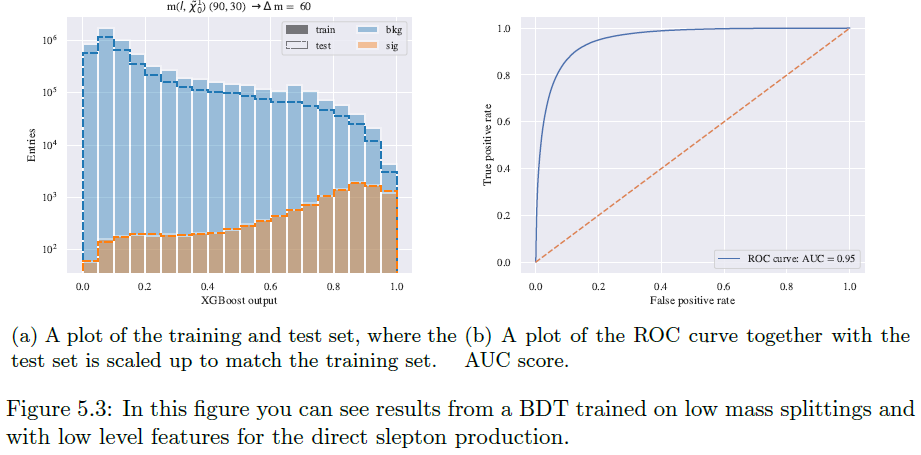Abstract
In this thesis we have searched for new physics phenomena predicted by Supersymmetry and Dark Matter simplified models. Both traditional cut and count analysis and Machine Learning(ML) based methods, such as Boosted Decision Trees and Neural Networks, were performed. The analysed run-2 13 TeV data, corresponding to an integrated luminosity of 139 fb^-1, were collected by the ATLAS experiment at the LHC between 2015 and 2018. The training was performed on different compositions of mass splittings (difference between the new particles involved in each new physics model) and features (low- and high-level kinematic variables). To achieve a good performance, we made use of an advanced computing infrastructure including both CPU's and GPU's. The results obtained have shown a better performance of the ML methods as compared to the more traditional cut and count analysis, especially in the low mass splitting region which so far has been a challenge for the cut and count analysis. Slightly better sensitivities were obtained with BDT but neural networks have so far not yet been fully exploited. Another future challenge.
